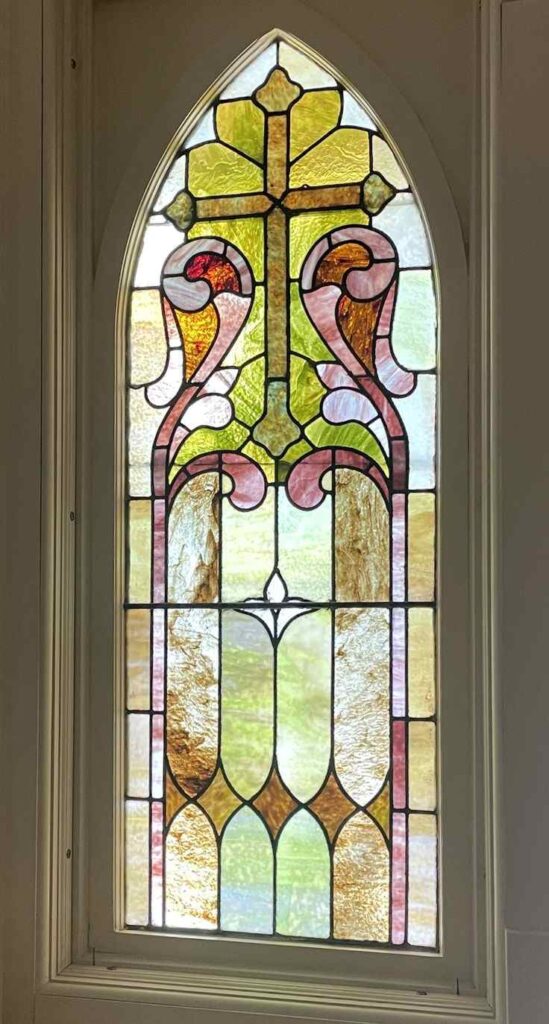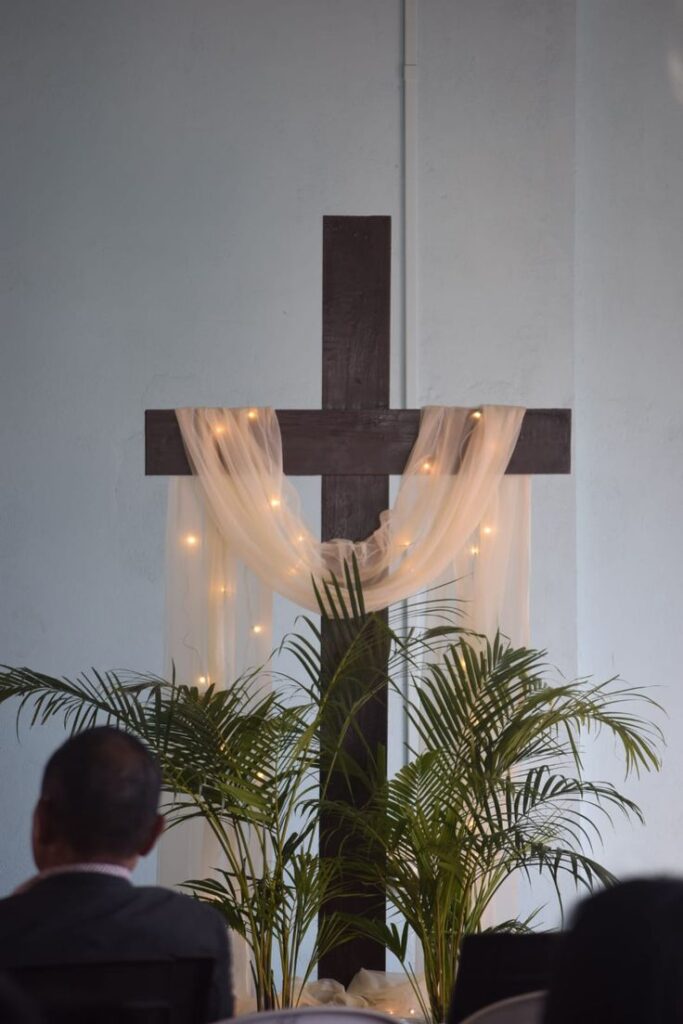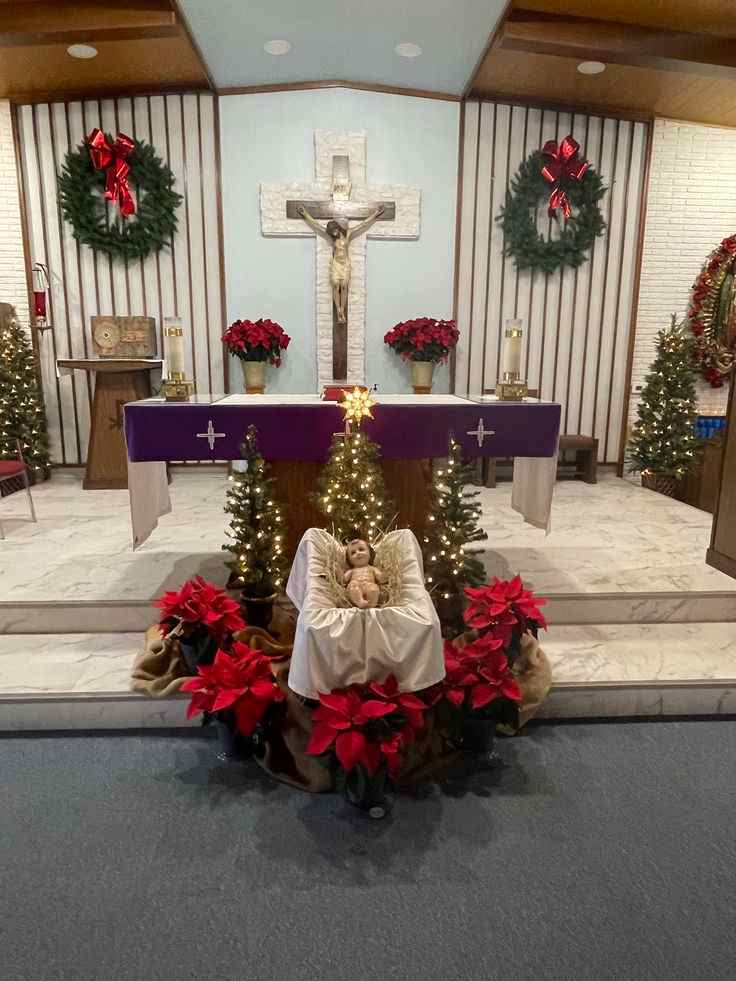Church Stage Design Ideas is about more than lights, wood, and décor—it’s about creating a space where people feel welcomed, inspired, and connected to God. When I, Father Joaquin Perez, think about stage design, I don’t just see a platform; I see a place where worship and community meet. Every detail, from the backdrop to the placement of a simple cross, speaks to the heart before a single word is preached.
Over the years, I’ve seen how thoughtful stage design can transform a service. Sometimes it’s the elegance of marble accents paired with warm wood that communicates both strength and humility. Other times it’s the beauty of carved artistry, reminding us of God’s patient craftsmanship in our own lives. Whether simple or elaborate, a church stage should reflect purity, grace, and the fellowship we share as a family of believers.
As a pastor, I’ve also learned the value of practicality. Storage built into the stage, flexible seating, or a rotating setup can make a big difference for families and communities that gather week after week. To me, the goal is balance—creating a stage that is both sacred and useful, both timeless and welcoming.
Church Stage Design Ideas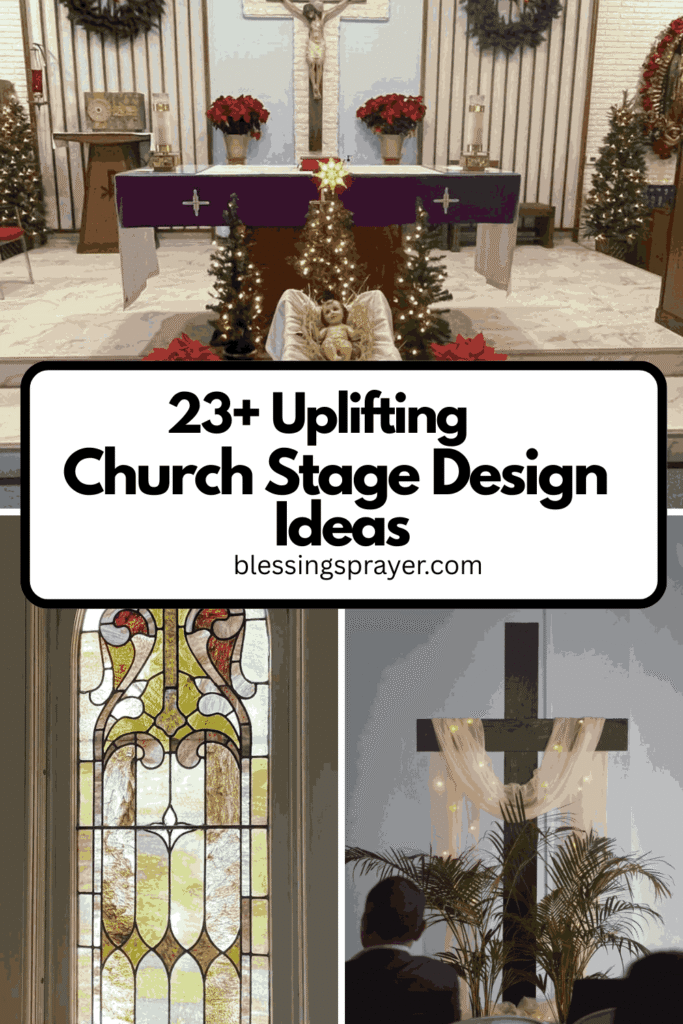
Wooden Cross as the Center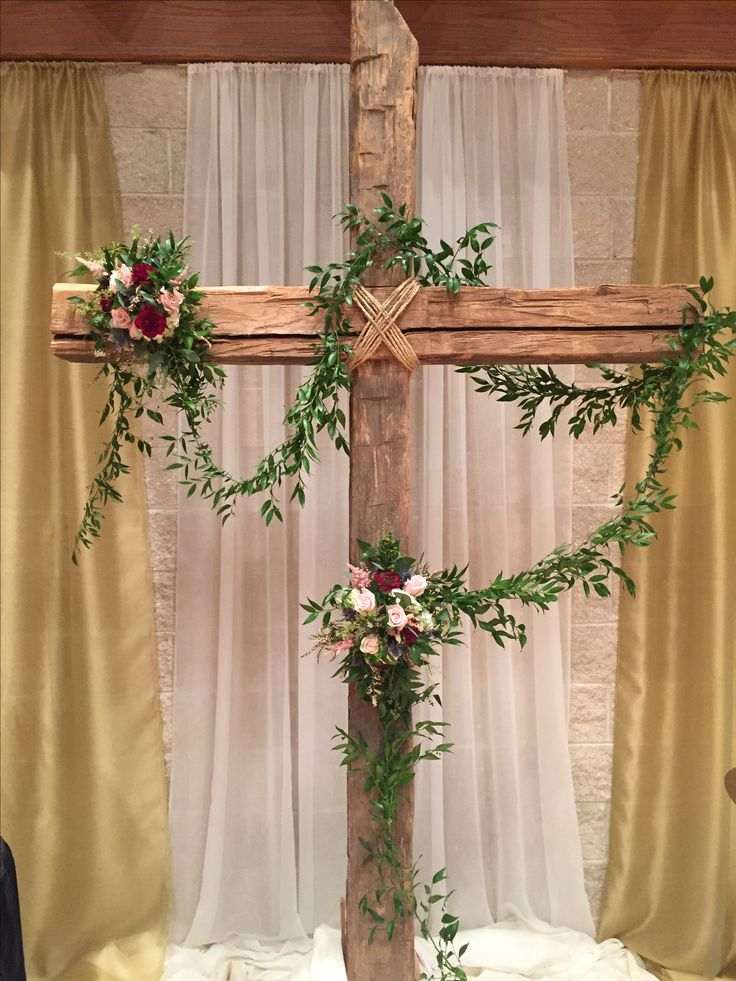
Source: Pinterest
In my opinion, nothing grounds a church stage like a simple wooden cross. I’ve seen so many churches try to overcomplicate things with lights and props, but honestly, that one rugged piece of wood says it all. Christ at the center. A cross doesn’t have to be polished either—I’ve found the more natural it looks, the more it connects with people. When folks walk in and see it, there’s no question about who we’re here for. Sometimes, the simplest design choice is the most powerful sermon.
Warm Lighting Instead of Bright Floods
Lighting can make or break a worship space. I’ve been in churches where the lights felt like a concert stage, and while that might fit some places, I prefer warm, softer tones. To be fair, people need to see the pastor’s face, but they also need to feel peace. I once visited a retreat center that used just amber uplighting behind fabric panels—it was breathtaking, and it made the worship feel more intimate. Light has a way of guiding hearts, and I believe warm tones whisper God’s presence better than anything flashy.
Carved Wooden Details
I’ve always loved when a stage carries a touch of craftsmanship. Once, during a retreat, I saw hand-carved wooden panels framing the pulpit. They weren’t polished like furniture store pieces—they had rough edges, marks of time. Honestly, it made me think of how God shapes us, detail by detail. Adding carved wood on a church stage—whether it’s the backdrop, a stand, or even the base of a table—brings story into the space. In my opinion, artistry matters because it reflects the Creator. It tells people: this isn’t just functional, it’s sacred.
Stained Glass Backdrop
Source: Pinterest
There’s something about stained glass that still stops me in my tracks. The light shining through, especially in the morning, feels almost like God is painting the sanctuary Himself. I once sat in a small chapel where the entire stage wall was just stained glass, and let me tell you, the sermons didn’t need much decoration after that. Even if a church can’t afford full windows, small stained glass panels placed behind the stage make a world of difference. In my opinion, stained glass is not just decor—it’s a sermon of light.
Scripture on the Walls
I’ve seen churches paint or hang Scripture verses behind the pulpit, and I’ll be honest—it moves me every time. Words have power, especially God’s Word. When someone walks in and sees “Be still and know that I am God” stretched across the stage wall, it centers the soul. I once helped paint a verse above a cross in our old church. Even years later, people told me how those words stayed with them. In my opinion, adding Scripture to stage design makes the message permanent, even before the preaching begins.
Simple Fabric Cross
Source: Pinterest
One Easter, we couldn’t afford big props or decorations, so we draped two pieces of white fabric over a wooden frame in the shape of a cross. It was simple—almost too simple—but when the light hit it during service, I saw tears in people’s eyes. To be fair, it reminded me that God doesn’t need grand displays. A cross of fabric, gently flowing with air, can say just as much as marble or stone. In my opinion, sometimes the most fragile materials carry the strongest message.
Wooden Communion Table
I’ve always believed the communion table deserves respect in design. I once saw a round marble top resting on a hand-carved wooden base, and I thought, “That looks like strength meeting grace.” In my parish, we used a plain wooden table for years, carved by one of the deacons, and it still carried holiness. To me, a communion table doesn’t need gold—it needs heart. In my opinion, if the table itself tells a story of service, people will see Christ in it.
Seasonal Wreaths
Source: Pinterest
One Christmas, I watched the youth group hang a giant evergreen wreath on the stage wall, right above the pulpit. It wasn’t fancy—just greenery and a red ribbon—but the way it framed the cross below was powerful. I realized then how something as ordinary as a wreath could shift the whole atmosphere. In my opinion, seasonal wreaths, whether for Advent, Easter, or even harvest, keep the stage alive. They remind us that time is holy too, and every season belongs to God.
Curtain Backdrop
I’ll be honest, I used to think curtains were too theatrical for a church. But then I visited a small congregation where they hung deep blue curtains behind the stage, and it transformed the room. It didn’t look like a theater—it looked reverent, calming. Fabric softens everything. I’ve found curtains are an affordable way to give the stage depth, cover up clutter, and create a holy space. In my opinion, if chosen with prayer, a backdrop of fabric can feel more sacred than stone.
Floor Candles
View this post on Instagram
There’s something about candlelight that makes people slow down. I remember one Christmas Eve service where we lined the stage with simple white candles at floor level. The glow was soft, low, almost like stars at our feet. People told me afterward they felt the presence of God in that simplicity. To be fair, real candles require care, but even battery ones can create that warmth. In my opinion, candles on the stage remind us that Christ is the light of the world—and we gather in His glow.
A Nativity Scene
Every December, our side table holds a small nativity, but one year we placed a life-size set across the church stage. Children gasped, adults smiled, and everyone walked up after service just to look closer. Honestly, it made Christmas feel real again. I know not every church has the space, but even a small nativity on stage brings people back to the heart of the season. In my opinion, it’s one of the simplest, most effective ways to keep Jesus at the center during Advent.
Draped Cross for Lent
During Lent, we cover the cross in purple fabric. At first, it bothered me—I thought hiding the cross might confuse people. But then I saw the reaction on Good Friday when the cloth was lifted away. The gasp, the silence, the tears—it was powerful. I realized the draped cross wasn’t about covering, it was about waiting. In my opinion, using fabric in this way teaches the congregation visually what words sometimes cannot: sorrow, longing, and finally, resurrection joy.
Wooden Stage Steps
View this post on Instagram
I once attended a church that built their stage steps from natural wood, left unfinished. They creaked a little, but I loved it. Why? Because it felt real. Too often, we make stages so polished that people forget this is a place for everyone, not just a performance. Wooden steps, humble and simple, remind us of the carpenter who became our Savior. In my opinion, even the way people walk up to the pulpit can tell a story of humility and approachability.
Hanging Lanterns
One autumn, we hung old-style lanterns above the stage, lit with warm bulbs. It changed the whole feeling of the room. Instead of harsh overhead lights, there was this glow, almost like campfire light. People said it felt like sitting in God’s living room. Honestly, I’ve found lanterns to be a perfect mix of rustic and sacred. In my opinion, adding them to stage design creates intimacy—you’re not in an auditorium, you’re in fellowship.
Painted Backdrop Mural
I’ll admit, I was nervous when a group of teens in our parish wanted to paint a mural behind the stage. But when they finished, it was breathtaking—a sunrise over hills, simple but full of hope. Every time I stood to preach, I felt like I was in the middle of creation. To be fair, not every mural works, but when done prayerfully, it’s powerful. In my opinion, a painted backdrop connects the congregation to the beauty of God’s world.
Stone Base for the Altar
I once saw an altar resting on a solid stone base, rough and unpolished. It felt like something from the Old Testament—an altar built from the earth itself. Honestly, it made me want to kneel. Stone has weight, permanence. In my opinion, adding stone, whether natural or manufactured, grounds the stage. It tells the people: this is firm, this is eternal, this is God’s.
Rotating Stage Element
At a church dinner once, I saw a round stage centerpiece that rotated slowly, carrying Scripture verses and small props. It wasn’t fancy, but it caught people’s attention. The idea of something moving, yet centered, struck me. It reminded me of life itself—we move, seasons change, but God remains. In my opinion, if done simply, a rotating stage piece can symbolize that constant motion under God’s hand.
Seasonal Lights
I’m not talking about twinkling Christmas lights strung haphazardly, but intentional seasonal lighting. One Easter, we lit the stage with golden uplights, and the whole sanctuary glowed with resurrection joy. For Advent, we used soft blues and purples. Honestly, the mood shifted every time. In my opinion, lights don’t just help us see—they help us feel. Seasonal lights carry meaning if we let them.
Fabric Ceiling Drape
One Pentecost, we draped red fabric from the ceiling to the stage, flowing down like fire. People gasped when they walked in—it was dramatic, but it told the story without words. I’ll be honest, it took a lot of effort to hang, but it was worth it. In my opinion, fabric that moves from ceiling to stage connects heaven and earth in a way no screen ever could.
Small Prayer Corner
I once suggested adding a little prayer nook at the side of the stage—just a chair, a candle, and a cross. People thought it might go unnoticed, but it became the most visited spot after service. Folks would kneel quietly, away from the crowd, yet still part of the sanctuary. In my opinion, adding a prayer corner on stage says: this is not a show, this is a place to meet God personally.
Wooden Chair for the Pastor
This might sound old-fashioned, but having a simple wooden chair on stage for the pastor can carry weight. I once preached in a church where they placed a carved chair just off to the side—it wasn’t about status, it was about presence. It reminded me of shepherding, of being among the flock, not above them. Honestly, I think small touches like this matter. In my opinion, even seating can speak of humility and service.
Open Bible Display
I’ll never forget the time we placed a large Bible, always open, on a stand at the front of the stage. People would come forward before and after service just to read a verse. It was simple, but it said: “The Word of God is central here.” To be fair, it took some discipline to keep it neat and well-lit, but it was worth it. In my opinion, an open Bible display reminds everyone that the stage is about God’s Word first.
Seasonal Banners and Fabrics
Changing banners or drapes with the liturgical season adds beauty without breaking the budget. Advent purple, Easter white, Pentecost red—each color tells a story. I remember as a boy watching the older women of our parish hang up fabric for Easter, and even before I understood the meaning, I knew it was special. In my opinion, fabric is one of the most underrated tools in stage design. It softens the space, adds symbolism, and keeps the church visually alive through the year. Don’t underestimate a well-placed banner.
Plants and Greenery
There’s something about having living plants on stage that breathes life into the sanctuary. I don’t mean plastic ferns shoved in a corner—I mean real greenery that makes the stage feel less like a platform and more like a garden. Honestly, I think it reminds people of Eden, of God’s creation, of life springing fresh. I once saw a church line the bottom of their stage with potted palms for Palm Sunday, and they left them for weeks. It looked alive, welcoming. Greenery makes the holy feel natural.
Minimalist Marble Accent
I once visited a cathedral where the altar stood on a marble base. It was stunning, but what struck me most was how simple it was. Just white marble, smooth and round. No gold trim, no carvings, just pure stone. It made me think about purity in worship—how sometimes less really is more. In my opinion, adding even a small marble accent—maybe a table, maybe the communion stand—brings elegance without distraction. It whispers strength and grace. Not every church can afford marble, I know, but even imitation marble can carry that same sense of timelessness.
FAQ
How do I make a church stage feel welcoming?
In my experience, a welcoming stage starts with simplicity and warmth. Natural wood, soft lighting, and small touches like greenery or a Bible on a stand help people feel at home. Honestly, it doesn’t take much—sometimes the smallest details make the space feel sacred and approachable.
What materials work best for a church stage?
I’ve found wood, stone, and fabric to be timeless choices. Wood adds warmth, stone brings permanence, and fabric creates depth and color. Marble or polished surfaces can be beautiful if used sparingly. In my opinion, the key is balance—materials should honor God while remaining practical for everyday worship.
How can lighting enhance the stage?
Lighting sets the mood. I prefer warm, soft tones over harsh, bright lights. Spotlights on the altar or cross, uplights on the backdrop, or even candles during special services can make worship feel intimate. To be fair, lighting is about both visibility and creating a sense of reverence.
Should the stage reflect the liturgical calendar?
Absolutely. Seasonal banners, drapes, or subtle décor for Advent, Lent, Easter, or Christmas help the congregation engage visually with the spiritual season. In my opinion, it also keeps the stage alive and meaningful throughout the year.
How can I keep the stage practical without losing beauty?
Practicality matters just as much as aesthetics. Built-in storage, movable furniture, or hidden compartments can keep the stage organized while maintaining a sacred atmosphere. I’ve found clever storage solutions help balance function and beauty seamlessly.

I’m father joaquin perez, we are a catholic church with all the sacraments where everybody is welcome. we celebrate catholic mass every Sunday at 12:30pm at saint stephen episcopal church at 2750 McFarlane road, Miami, Florida

